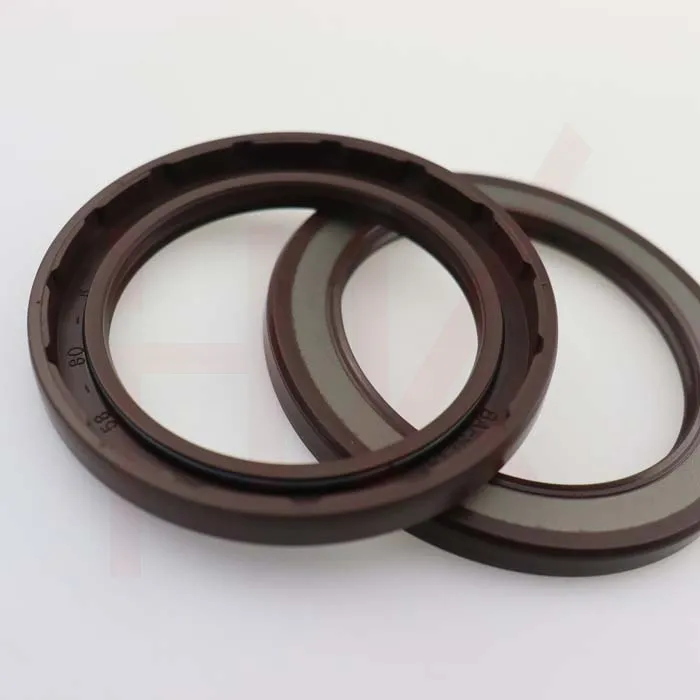Nov . 08, 2024 16:16 Back to list
hydraulic oil seal types
Understanding Hydraulic Oil Seal Types A Comprehensive Overview
Hydraulic systems play a critical role in various industries, enabling machinery to operate with efficiency and precision. Central to the operation of these systems are hydraulic oil seals, which prevent fluid leakage and maintain pressure within the system. Understanding the different types of hydraulic oil seals is essential for engineers, maintenance professionals, and anyone involved in the design or upkeep of hydraulic equipment. This article delves into the various types of hydraulic oil seals, their applications, and their importance in hydraulic systems.
What are Hydraulic Oil Seals?
Hydraulic oil seals are essential components that seal the gaps between moving and stationary parts in hydraulic machinery. They prevent the escape of hydraulic fluid while also keeping contaminants out of the system. Unlike traditional seals, hydraulic oil seals are specifically designed to withstand high pressures and varying temperatures, making them crucial for the efficient and reliable operation of hydraulic systems.
Common Types of Hydraulic Oil Seals
1. U-Cup Seals U-cup seals, also known as U-seals or U-rings, are popular for their simplicity and effectiveness. They consist of a U shaped profile that provides a robust sealing action. U-cup seals are particularly effective in static sealing applications and can handle both dynamic and static loads. They are commonly used in hydraulic cylinders and piston rods.
2. O-Rings O-rings are circular seals that fit into grooves and prevent fluid from leaking through gaps. They are versatile and widely used in various applications, including hydraulic systems. O-rings come in different materials, such as nitrile, silicone, and fluorocarbon, allowing them to withstand different temperatures and chemical environments. Their ease of installation and cost-effectiveness make them a popular choice for many hydraulic applications.
3. V-Seals V-seals, also known as V-ring seals, consist of a rubber ring with a triangular profile. They are primarily used for shaft sealing applications and offer excellent protection against dirt and contaminants. V-seals can accommodate axial movements, making them suitable for applications with misalignment or dynamic motion.
4. Lip Seals Lip seals, or radial shaft seals, consist of a flexible lip that contacts the shaft while preventing the escape of hydraulic fluid. These seals are designed to handle high-pressure applications and are effective in both static and dynamic sealing. Lip seals are widely used in hydraulic cylinders, gearboxes, and pumps.
5. Cassette Seals Cassette seals are innovative sealing solutions that incorporate multiple sealing elements into a single unit. These seals are designed for high-performance applications and are effective in preventing leakage and contamination. Cassette seals are especially beneficial in environments with extreme pressure and temperature variations.
hydraulic oil seal types

Materials Used for Hydraulic Oil Seals
The materials used in hydraulic oil seals significantly affect their performance, durability, and compatibility with different fluids
. Common materials include- Nitrile Rubber (NBR) Known for its excellent resistance to petroleum-based oils and fuels, NBR is widely used in hydraulic seals.
- Fluorocarbon (FKM) This material offers outstanding resistance to high temperatures and aggressive chemicals, making it suitable for demanding applications.
- Polyurethane (PU) Known for its abrasion resistance and durability, polyurethane seals are often used in hydraulic systems that experience wear and tear.
Importance of Choosing the Right Seal
Selecting the correct type of hydraulic oil seal is crucial for the overall performance of hydraulic systems. An inappropriate seal can lead to fluid leakage, increased maintenance costs, and potential system failures. Factors such as operating pressure, temperature, and compatibility with the hydraulic fluid should be carefully considered during the selection process.
Conclusion
Hydraulic oil seals are indispensable components that ensure the effective operation of hydraulic systems across various industries. Understanding the different types of seals and their specific applications helps professionals make informed choices, ultimately enhancing the efficiency and reliability of hydraulic systems. Whether you are involved in designing new machinery or maintaining existing systems, a solid grasp of hydraulic oil seal types is essential for achieving optimal performance and longevity. By selecting the right seal for your application, you contribute to the smooth and efficient operation of hydraulic machinery.
-
TCN Oil Seal Metal Ring Reinforcement for Heavy Machinery
NewsJul.25,2025
-
Rotary Lip Seal Spring-Loaded Design for High-Speed Applications
NewsJul.25,2025
-
Hydraulic Cylinder Seals Polyurethane Material for High-Impact Jobs
NewsJul.25,2025
-
High Pressure Oil Seal Polyurethane Coating Wear Resistance
NewsJul.25,2025
-
Dust Proof Seal Double Lip Design for Construction Equipment
NewsJul.25,2025
-
Hub Seal Polyurethane Wear Resistance in Agricultural Vehicles
NewsJul.25,2025
-
The Trans-formative Journey of Wheel Hub Oil Seals
NewsJun.06,2025
Products categories
















